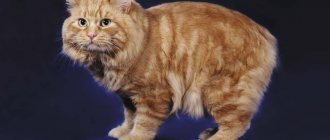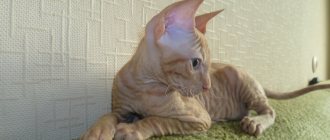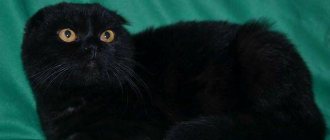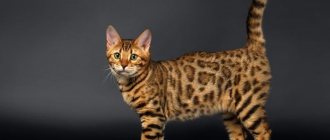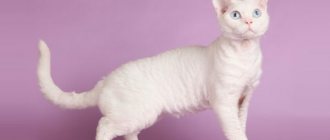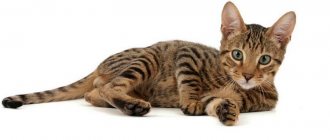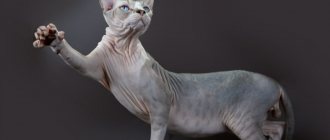February 17, 2020History, Anthropology
What is Tibet? Are these mountains? Is this part of China or a separate country? What does yoga have to do with Tibet? And the Dalai Lama? And anyway, who is this?
Author Anna Tsendina
This year, the Institute of Classical Oriental and Antiquity at the National Research University Higher School of Economics has opened enrollment for the first time in the new bachelor’s program “Mongolia and Tibet.” To help future students make their choice, Arzamas asked the academic director of the program, Professor Anna Tsendina, to talk about what Tibet is like.
What does Tibet look like? Are these only high mountains?
Nicholas Roerich. Everest (Chomolungma). 1936 Nicholas Roerich Museum
Yes and no. Tibet is truly home to the Himalayas, the highest mountains on the planet. Their peak Chomolungma has a height of 8848 meters. Moreover, Tibet has not only mountains, but also fertile valleys, deserts, rivers and lakes. It’s just that all this is raised to a great height: the average altitude of Tibet is about 4000 m above sea level. Therefore, geographers and travelers called Tibet a “swelling of the Asian continent,” a “table-shaped mass,” and a “giant pedestal.” And for the same reason, many people think that Tibet is only mountains.
Description of the Himalayan cat
Today, many cat organizations have come to a consensus on the standard. The difference between the Persian and Himalayan cat breeds is mainly in the length of the coat and its color variant.
According to TICA, a Himalayan beauty should look like this:
- Head
round and somewhat massive, smooth in shape.
With general proportionality to body size, the head is either large or medium in size. The jaws are wide, strong with a clear, regular bite. The chin looks strong and goes well with full, prominent cheeks. The muzzle of the Himalayan cat
is flattened in front and very wide and short; - Ears
the animals are small and set very wide, the tips of the ears are rounded;
- Eyes
very large and round, set wide and somewhat convex. The color must be in strict accordance with the standard - any variations of blue;
- Nose
equal in length and width, nostrils strongly open. If you examine the cat in profile, the nose will be level with the forehead and chin;
- Body
clearly recognized as a cobby type. The muscles are well developed. The abdomen is rounded on all sides, often large in size. The neck is short, massive, the chest is low;
- Himalayan cat paws
look short and straight. The bone is large. The pads of the paws are round and impressive;
- Tail
straight and in perfect accordance with the length of the body. Characterized by a very soft, fluffy, necessarily pigmented tail;
- Himalayan cat fur
very voluminous. Large volume is created due to the thick undercoat. Another characteristic feature of the breed is the fluffy collar. The coat is long on all parts of the body;
- Color
resembles a Siamese. The pigment for which the “Himalayan” gene is responsible appears on the face, paws, ears and tail. On such protruding areas of the body, variations in point color appear due to mutations of other genes. The most common color of Himalayan cats is seal point. The most rare are points of chocolate and lilac shades.
The appearance of the imposing pets is very impressive due to the combination of long fluffy hair and a somewhat arrogant expression of the muzzle, reminiscent of the Persians.
What is older - Tibet or Rus'?
Yan Liben. Emperor Taizong gives an audience to Garu, the ambassador of the King of Tibet, who has arrived to woo Princess Wencheng. 641 According to legend, the Chinese princess Wencheng brought Buddhism to Tibet.
故宫博物院 (Imperial Palace Museum, Beijing) Depends on what you mean. If we take the adoption of a world religion and the formation of statehood as a starting point, then Tibet is ancient: Buddhism was adopted here in the 7th century, at which time the Tibetan Empire arose. Before that, wars were constantly going on between various clans to expand their possessions. In the 7th–9th centuries, the so-called Yarlung dynasty began to dominate this struggle, and in the 7th century a huge empire arose on the territory of Tibet, conquering even the capital of Tang China, Chang'an (modern Xi'an) and by the second half of the 8th century, spreading to Samarkand.. In Rus', Let us recall that statehood began with the calling of the Varangians in 862, and Christianity was adopted in 988. Chinese written monuments mention proto-Tibetan tribes that existed before our era. Rus' was less fortunate in this sense - among its neighbors there were no such lovers of historical records as the Chinese.
History of the origin of the Himalayan breed
Himalayan cats
, repeating the color of the Siamese and almost surpassing the Persian in the beauty of the fur coat, they simultaneously tried to breed them on two continents at once, at approximately the same time. In the mid-30s of the last century, felinologists Clyde Keller and Virginia Cobb were crossing a Siamese cat and a Persian with a black coat color. The process was monitored, and the result was this: all the kittens were born black, but with short hair. Therefore, the Siamese color point and long hair genes are recessive.
Over the next few years, further attempts were made to develop a new breed. Already at the beginning of 1950, the American Margarita Goforth, purposeful in her desire, finally achieved success in this work: kittens with long hair, the color of a Siamese and similar to a Persian were born. The breed, whose fluffy coat resembled the Himalayan rabbit in appearance, was registered a little later. At the same time, the Longhaired Colorpoint was also developed in Great Britain.
To consolidate the expression of genes and more closely resemble the Persians, the Himalayan cat was crossed with the Persian cat. But the new breed was not registered for quite a long time due to the fact that the cats born from such a cross did not fit into the standard for Persians.
And yet, the CFA organization did not ignore new representatives of felines, and in 1984 the Himalayan and Persian branches were combined. However, some breeders were against such a merger and founded a new organization, NCFA, which recognized the right of breeds to exist separately.
Today, despite differences in the views of cat organizations, the Himalayan cat is one of the most popular and expensive in the world.
What is Tibet: state, religion or place?
Map of Tibet and surrounding areas. 1906 Royal Geographical Society
Rather a place. Tibet is a geographical area consisting of a large number of distinct regions. They are inhabited by peoples who speak the same language. In addition, they share a common religion, culture and history. Today these areas belong to different administrative regions and even countries. Central Tibet forms the Tibet Autonomous Region of the People's Republic of China, the northern region of Amdo is partially included in the provinces of Qinghai and Gansu of the People's Republic of China, eastern Kham is in the provinces of Sichuan and Yunnan of the People's Republic of China, the western regions (Ladakh and others) belong to India.
So Tibet is part of China?
Signing of the Agreement for the Peaceful Liberation of Tibet, or the 17-Point Agreement. Beijing
, 1951 (Tibet Government in Exile) Today China is often referred to as the People's Republic of China, but in reality it is only a part of the People's Republic of China. Historically, China is a country inhabited primarily by Han , an ethnic group of the Sino-Tibetan language family. This is the most numerous people on Earth and the largest nationality in the PRC.. During the era of the Manchu Empire, which established the Qing dynasty in China, which ruled from the 17th to the 20th centuries, the power of Beijing began to extend to the neighboring territories of East Turkestan, Mongolia, and Tibet. After the revolution of 1949, a new state, the People's Republic of China, was formed: parts of these regions became part of it with autonomous rights. In 1951, an agreement was signed in Beijing on the annexation of Tibet to the PRC, and the People's Liberation Army of China occupied Lhasa Lhasa, the former capital of the independent Tibetan state, and now a city district in the Tibet Autonomous Region of the PRC. Thus the Tibet Autonomous Region was formed, which entered into the People's Republic of China. Other areas inhabited by Tibetan peoples became part of the provinces of the PRC: Qinghai, Gansu, Sichuan, Yunnan. However, many Tibetans live outside of China - in India (in particular, Sikkim), Nepal, and Bhutan.
Content Features
The Tibetan cat is in good health, but since it belongs to the oriental type, it can suffer from nystagmus, strabismus, heart defects, and is prone to diabetes mellitus and kidney ailments. Veterinarians recommend protecting your pet from hypothermia and heat stroke. Combing should be done with combs for long-haired cats 1 rub. at 2 weeks, especially paying attention to the hair on the tail. Eyes and ears should be wiped with special hygienic veterinary products. The cat will take care of its own claws if you purchase a scratching post.
Tibetan cats are unpretentious eaters. It is preferable to feed your pet high-quality industrial food that contains all the necessary ingredients. The daily norm is 70-100 g. The diet should also include fresh lean meat, boiled vegetables and fish, rice or buckwheat, offal (1 rub. every 1.5-2 weeks), low-fat cottage cheese. Broccoli, fresh tomatoes, smoked, fatty and salty foods are not allowed.
Who rules Tibet?
Dalai Lama XIV in exile in India. 1959 © John Topham / Public domain
Government of the People's Republic of China We are talking about that part of Tibet that is part of the People's Republic of China. It controls all aspects of life - state, administrative, political, economic, cultural and others. However, there is also a so-called government of Tibet in exile: it was formed in 1959, after the flight of the fourteenth Dalai Lama and the Tibetans who followed him from Tibet. The goal of this government is the liberation of Tibet. At the same time, it deals with issues of education and culture of Tibetans living in exile. There are about 150 thousand people like that.
Who lives in Tibet: Chinese or Tibetans?
Vasily Vereshchagin. Residents of Western Tibet. 1874–1876 State Tretyakov Gallery
Tibetans. But this is not a monolithic ethnic group, but different local groups: Amdos, Khambas, Sherpas, Ladakhs and others. Today, the Chinese (mainly officials and military personnel), Uyghurs (traders) also live in Tibet. The Uyghurs are the Turkic indigenous people of East Turkestan, now the Xinjiang Uyghur Autonomous Region of the People's Republic of China. and Mongols (Buddhist monks). They are connected to each other purely functionally: the Chinese are in charge, the Uighur sells pumpkins, and the Mongol prays. Interethnic marriages are quite rare. Language studies, a few archaeological excavations, and most importantly, Chinese written sources that appeared in the 2nd century BC show that the basis of the Tibetan ethnic group was the so-called Qiang: they came from the northeast and, mixed with various groups of Indo-Iranian, Turko-Mongolian and Australasian origin, formed the Tibetan ethnic group.
Care and maintenance of the Himalayan cat breed
Unlike other cats, the Himalayan breed
requires increased attention. First of all, the animal’s thick and long hair needs care. The combing process is carried out daily in two stages. First, the fur coat is combed with a sparse comb, and then thoroughly combed out with a special brush or slicker brush.
The cat loves to swim, and will be happy to indulge in washing in the owner's hands. Bathing must be done regularly, avoiding getting the fur greasy or dirty.
You should also not ignore your pet’s eyes - due to the structure of the muzzle, the tear ducts are less developed than in cats of other breeds. Eyes should be washed daily with a clean, damp cloth.
Otherwise, caring for a Himalayan pet is carried out like other cats - a properly selected diet and full care of the owners.
Diseases of Himalayan cats
The breed is not considered completely free of health problems. Himalayan cat
may develop cutaneous asthenia - a hereditary disease of connective tissue, the skin becomes very stretchable and bursts. Can't be cured. Cataracts sometimes occur, but they do not progress.
It is worth considering how many times a day your cat goes to the toilet, as you may miss the manifestations of polycystic kidney disease.
Conclusions about the breed
External gloss and imposing gait of the Himalayan cat
goes well with her positive character traits. Undoubtedly, the cat is affectionate, loving and will gladly receive attention from its owners and give it back. Small children will not be offended, because one type of Himalayan kittens can give a good mood. The energy of pets will appeal to active people.
In terms of health, the Himalayan pet needs close attention and observation.
Animals need daily care, which can be appreciated by those people who enjoy caring for their loved ones. The breed can be appreciated by people for whom a cat is the personification of the softness of thick fur and warmth.
Do they speak Tibetan in Tibet?
A sample of ancient Tibetan writing found in Turfan. 618–907 Berlin-Brandenburgische Akademie der Wissenschaften
Absolutely correct. The Tibetan language is part of the Tibeto-Burman subfamily of languages of the Sino-Tibetan family. The classical written language appeared in the 7th century. At the same time, different ethnic groups living in Tibet speak different dialects and do not always understand each other. For example, an Amdosian That is, a resident of Amdo, a region of Tibet now divided between the Chinese provinces of Qinghai, Sichuan and Gansu. from Qinghai Province may not understand a resident of Central Tibet. And vice versa.
Are everyone in Tibet Buddhist?
Johan Nieuhof. Four men with Buddhist rosary. 1665 Bibliotheek van het Vredespaleis
Not all, but the vast majority. Buddhism is the real national idea of the Tibetans and the basis of their self-identification. However, it is heterogeneous and consists of many local traditions. In European literature they are often called sects, but this is not entirely correct: the concept of “sect” presupposes the existence of a main movement and a certain number of branches, while Tibetan Buddhism consists of local schools - Nyingma, Kagyu, Gelug and so on. The Gelug school originated in the 14th century and became incredibly popular. She reformed the church structure, religious rituals, the canon, and the clothing of monks and hierarchs. For example, representatives of the Gelug school came up with tall yellow hats: therefore, the school was first called the Yellow Cap school, and then simply yellow. The Dalai Lama and the second most important hierarch of the Tibetan Church, the Panchen Lama, belong to it. Some Tibetans practice the ancient pre-Buddhist Bon religion. Additionally, there are a small number of Christians in Tibet.
Cat breeds with photos
The Tibetan cat (English: Tibetan cat) is a very young hybrid breed, bred in the Netherlands as a result of mixing the blood of Burmese and Balinese cats (Balinese) in the process of breeding the Tonkinese cat (Tonkinese). In appearance, the Tibetan cat is very similar to the Tonkinese cat, but differs from it in its semi-long fur. It has a medium-sized, muscular and strong body and comes in all Siamese and Burmese coat colors, as well as the Mink coat color.
This breed arose in the process of selection of Tonkinese cats, to which the blood of Siamese and Balinese cats was partially mixed, as well as genes for semi-long fur, as a result of which semi-long-haired kittens began to appear in litters of hybrid Tonkinese cats along with short-haired ones. Despite the fact that semi-long-haired offspring were not always the goal of Tonkinese breeding, over time, an independent breed was developed on its basis, for which its own standard was developed. In 1997, Tibetan cats were officially registered as a breed in the Netherlands, but are not yet recognized by other felinological associations.
The exterior of the Tibetan cat is characterized by a rounded build, in harmony with its elegant appearance, muscular limbs proportional to the body (with the hind limbs slightly longer than the front), as well as a medium-length tail, wide at the base and slightly tapering towards the end. Depending on the sex, the body length of the animal is 40-50 cm with a weight of 3 to 5 kg.
The fur is thin in structure and does not lie close to the body. There is almost no undercoat. In this case, the coat should be as elastic as possible. Cat fur is relatively easy to care for; it just needs to be brushed regularly. Acceptable color colors are mink, as well as others common to Siamese and Burmese cats, such as fur seal, chocolate, blue, light brown and lilac. Like almost all cats without undercoat, Tibetans look a little more elegant than breeds with two layers of fur.
The head has a moderately pronounced wedge-shaped shape; The cheeks and profile of the head are distinguished by clear contours, while the profile line is smooth and convex, with a slight transition from the forehead to the nose.
The muzzle is rounded, emphasizing the round contour of the head.
The ears are medium in size, wide at the base, slightly rounded, widely spaced. However, the presence of small tufts of hair on the inside of the ears is not a defect.
The eyes of the Tibetan cat are also medium in size, widely spaced, almond-shaped, with a moderately rounded lower eyelid. Eye color is bright aquamarine or blue-gray, depending on the color of the fur. Strabismus is an unacceptable defect.
In addition to the official name " Tibetan cat ", in the felinological literature and the terminology of some breeders there are also unofficial names of the breed, such as Tonkinese longhair, Burmalayan cat, Himbur, Iranese. Iranian), Tonkalayan (English: Tonkalayan cat) and others.
In principle, this is a semi-longhaired Tonkinese cat, very similar to the Balinese.
Due to its genetic proximity to Tonkinese, Balinese and Siamese cats, it is similar to them not only in appearance, but also in many character traits. Thus, like the representatives of the listed breeds, Tibetan cats are distinguished by their friendliness towards people, playfulness and curiosity. They are always attracted to interesting events happening around them. In their “free” time, they like to lounge on the sofa.
These animals are very affectionate to their owners. When they return home, even after a short absence, the Tibetan cat, like a small dog, joyfully runs towards them. At the same time, she friendly and openly accepts the company of other cats and strangers and, in case of mutual sympathy, quickly becomes attached to them. At the same time, it must be remembered that Tibetan cats are very temperamental. Therefore, owners should exercise a lot with them, because lack of attention can make them unhappy.
These animals are best kept in an apartment. However, in order for a Tibetan cat to be able to frolic freely and show its innate skill as a steeplejack, it is optimal for it to be in the company of other cats and have plenty of room for movement. True, in this case, you should properly organize the interior space of the house so that the cat cannot jump or fall directly on you, or drop down and break the interior items standing above.
A Tibetan cat is considered an adult only after it reaches two years of age. The life expectancy of this breed is 14 years.
Other articles about domestic cats
- Burmilla
- Oregon Rex
- British shorthair cat
- Appearance of a Scottish Fold cat
- Manx
Tags:
- Balinese
- Burmese
- Siamese
- Tibetan
- tonkinesis
| < Previous | Next > |
By the way, who is the Dalai Lama?
Dalai Lama XIV. Tibet, 1939 (Museum of Tibet, Dharamsala)
The Dalai Lama is the spiritual leader of the Tibetans. The current, fourteenth Dalai Lama's name is Tenzin Gyatso: he is Tibetan and was born in the northeast, in the Amdo region, into a simple peasant family. Buddhists believe that when people die, they are reborn into other people or animals, but have no memory of their previous births. But holy people are reincarnations of deities and great saints of the past: for example, the Dalai Lama is the reincarnation of the bodhisattva Avalokiteshvara. When a “living god” dies, which is what Buddhist saints are called in European literature, his companions go in search of the boy into whom the deceased incarnated. A set of magical (for example, special omens, dreams of hierarchs) and physical (for example, the shape of ears and nails) signs indicate a particular baby. In the case of the fourteenth Dalai Lama, everything pointed to the boy from Amdo.
Character and behavior
The animal has a playful, curious and restive character.
The Tibetan cat has a different temperament and requires space. Animals love to play, run, jump and are very curious. They are friendly and can make friends with a stranger. Often a pet follows its owner everywhere, especially if the owner is doing something. The cat accompanies him to the kitchen, lies down on the keyboard, “helps” him unpack bags or do the cleaning. He is affectionate and has a hard time being separated from family members. Gets along well with other animals. Many representatives of the Tibetan variety are not afraid of heights, so they like to jump on cabinets or high pieces of furniture, and the owner should take care of the safety of vents and windows.
The words “Freedom for Tibet” immediately cause a scandal. Why?
Participant in the demonstration for a free Tibet. London, 1999 © Walter G. Allgöwer / Getty Images
The question of political independence of a large ethnic group, which in the past had experience of independence and its own statehood, is very painful. After fleeing in 1959, the current Dalai Lama gained great popularity and support in Western countries. This is why the northern, Tibetan branch of Buddhism is so widespread in the West, and not the southern (for example, Thai or Burmese). This also explains why the question of Tibetan independence is often louder than the question of the independence of the Kurds, Uyghurs or anyone else.
Origin of the Tibetan cat
This representative of the breed did not come from the mountains of Tibet, but was bred by crossing Balinese, Tonkinese and Burmese cats in Holland. However, the first cat similar to the Tibetan was introduced in 1928 under the name Siamese Longhair. Tonkinese are considered the main breeding animals. Semi-longhaired kittens often appeared in the litter, which breeders selected for further selection. The final version of the Tibetan cat was registered in 1997, but has not yet been recognized as an official breed by world felinological organizations.
Was yoga invented in Tibet?
Yogi sitting in the garden. 1620s–40s Columbia University
No, yogic practices originate in India. They came to Tibet along with Buddhism, like many other things: great literary monuments, writing, the Hindu pantheon of deities, myths. Elements of yoga were included in the tantric practices of Tibetan Buddhists, who use physical and mental exercises to achieve a higher spiritual state. However, this is not at all the main direction of Buddhism in Tibet.
